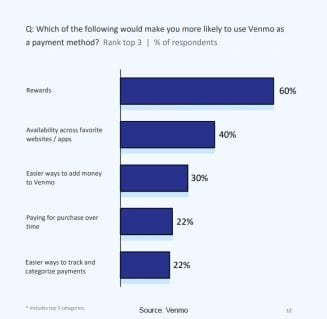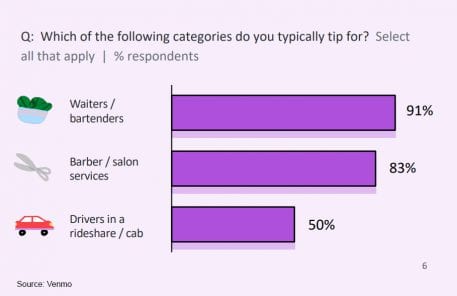EXCLUSIVE: Who Is Generation Venmo – And How Can Retailers Reach Them?

The year 2020 has been disruptive across the board for consumers — changing how they shop, how they work, how they play, how they spend time with others and how they’ve filled the scores of hours they’ve spent alone.
New research of roughly 2,000 of U.S. Venmo customers as of October 2020 offers a clearer snapshot of these customers’ new financial habits and purchase and shopping behaviors, and how they view Venmo as a payment method.
Here’s the upshot: A consumer pre-wired for digital commerce — and looking for new opportunities to get their digital-first groove on.

Generation Venmo, some 65+ million consumers who have downloaded and used the app, according to the new data released Tuesday (Jan. 19), skews younger and slightly more affluent than the typical consumer. They also tend to be more educated, with 67 percent having a bachelor’s degree or higher, versus 32 percent within the general U.S. Additionally, a little over a third (37 percent) of Venmo users report having a child or teenager in their household.
Generation Venmo is also the prototypical digital-shifter. Sixty-five percent of Venmo customers claimed to have increased their online purchasing behavior during the pandemic period, at the same time they have reduced their in-store shopping habits.
 Perhaps not surprisingly, Venmo users would like more of an opportunity to pay with Venmo more often in their shopping journey because it’s easy, convenient and from a brand they trust. Some 89 percent of Venmo users who said they’d prefer to shop and pay with Venmo say it’s because they trust the brand, and it allows them to split the charges with friends and family.
Perhaps not surprisingly, Venmo users would like more of an opportunity to pay with Venmo more often in their shopping journey because it’s easy, convenient and from a brand they trust. Some 89 percent of Venmo users who said they’d prefer to shop and pay with Venmo say it’s because they trust the brand, and it allows them to split the charges with friends and family.
Some 47 percent of Venmo users reported that they’d be interested in using Venmo to shop online, a proportion that rises to 60 percent if they would also be rewarded for using it to pay.
Also likely to increase Venmo users’ odds of shopping with Venmo were its presence on desirable apps or sites, the ability to add funds more easily to the Venmo app, the option to pay over time and more options for tracking and categorizing payments.
 Moreover, the study demonstrated, Venmo as a payment method has already begun to expand its original bounds as a peer-to-peer (P2P) payment service used between friends. Ninety-three percent of Venmo customers have tipped individuals in the past six months, while 83 percent engage in a tipping activity monthly. Individuals in the food, drink and beauty industries are the most common recipients.
Moreover, the study demonstrated, Venmo as a payment method has already begun to expand its original bounds as a peer-to-peer (P2P) payment service used between friends. Ninety-three percent of Venmo customers have tipped individuals in the past six months, while 83 percent engage in a tipping activity monthly. Individuals in the food, drink and beauty industries are the most common recipients.
Those same consumers, the data suggests, are now looking for more opportunities to leverage Venmo to pay in a wider context. As for where those consumers would look to shop and pay with Venmo, clothing and apparel retailers led the pack, with 56 percent of Venmo customers naming it, followed by restaurants at 48 percent, grocers at 37 percent and food and beverage delivery services at 34 percent.
Finally, it seems that for Venmo customers, social commerce is increasingly commerce in context. According to the study, 53 percent of Venmo customers report spending more time on social media since the start of the pandemic, and the majority expect to continue their current usage level of social platforms over the next six months.
